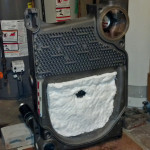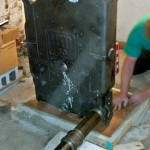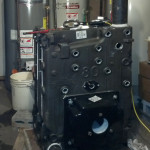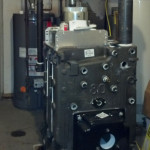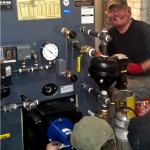The brownstone building needed a new steam boiler to replace the scary, leaky old one. After calculating the connected load of pipes and radiators, we selected a commercial type boiler with large sections that could accommodate a large pipe diameter header. We disconnected the old number and waved as it went out the door, to be recycled. Our multi-talented and -muscled demo team brought the heavy new boiler sections into the building and set them out of the way for us at the same time.
